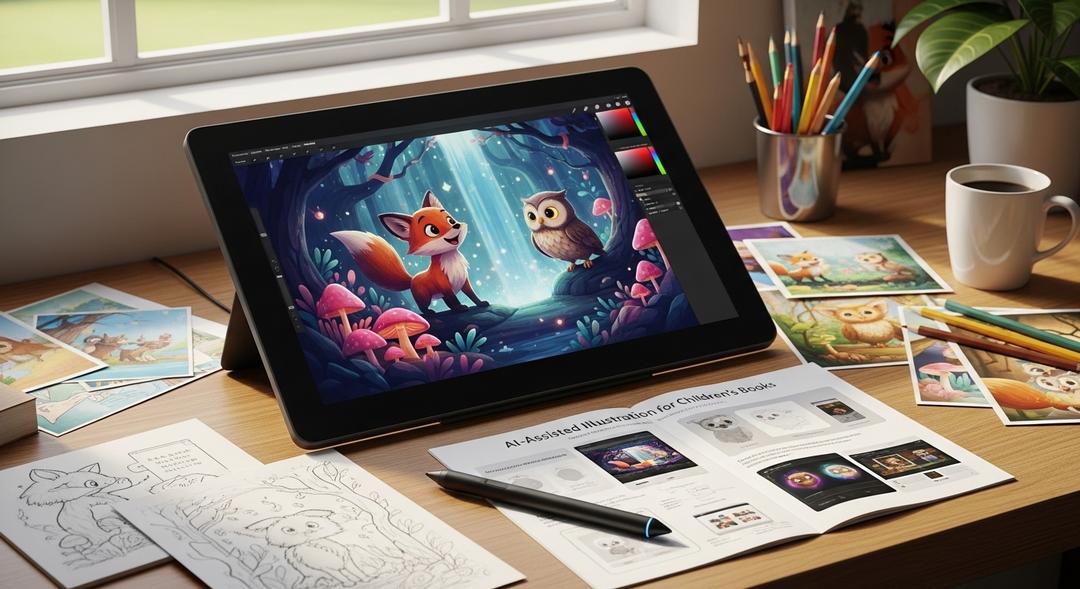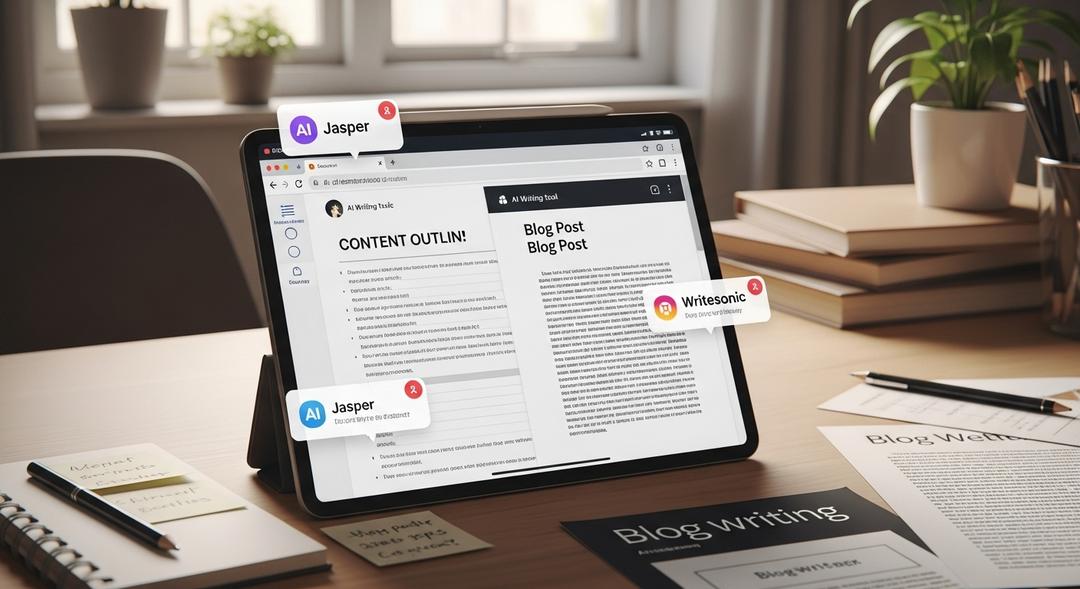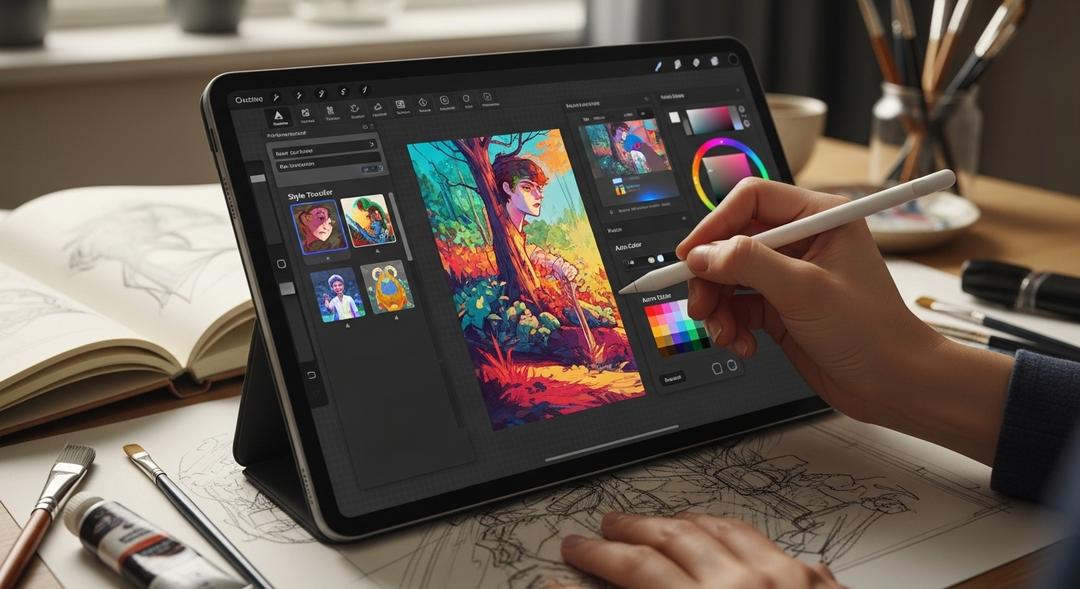Children’s books creation tools have completely transformed how stories are developed, illustrated, and brought to life for young readers. Today’s digital platforms empower educators, parents, and writers to craft imaginative children’s books with ease, unlocking creative potential that was difficult to reach in the past.
With interactive story makers and illustration assistants just a few clicks away, these solutions not only simplify the creative journey but offer intuitive methods to deeply engage kids. The ideal platform helps save valuable time, enhances creativity, and enables you to tailor content for any educational or entertainment goal.
What are the benefits for using Children’s Books Creation Tools
- Efficient book creation: Easily draft stories, insert illustrations, and publish books without needing advanced skills.
- Personalized learning: Adapt storylines and characters to align with any child’s interests or educational needs.
- Budget-friendly solutions: Reduce both time and expense typically needed to make high-quality children’s books.
1. Curipod
Features
- Merges interactive activities into stories for classroom use.
- Has ready-made templates for creative writing or educational purposes.
- Permits real-time feedback from both teachers and students.
- Enables content exporting for lessons and presentations.
Pros
- Great for educators seeking engaging teaching materials.
- User-friendly layout for quick onboarding in schools.
- Facilitates collaboration between students and teachers.
Cons
- Best suited for classroom activities rather than home storytelling.
- Fewer illustration options compared to specialized book-making platforms.
- Most robust functions require paid access.
Pricing: Curipod includes a complimentary version with key features, while paid options offer full template access and collaboration tools.
2. Scratch
Features
- Employs a block-based coding structure for both storytelling and animation.
- Utilizes a drag-and-drop method suitable for all ages and skill levels.
- Offers a vast online database of user-shared projects.
- Fosters a collaborative spirit through project sharing and remixing.
Pros
- Encourages children to design interactive tales and simple games.
- Completely cost-free and usable from any browser.
- Builds a collaborative and creative community worldwide.
Cons
- Requires some understanding of basic coding.
- Classic book layouts are limited; focus lies more on animation.
- Internet connectivity is necessary for sharing and uploading projects.
Pricing: Scratch is always free for every user.
3. Google’s Teachable Machine
Features
- Allows users to create models using visuals, sounds, or movement.
- Features a straightforward interface for young learners and adults alike.
- Lets users incorporate trained models into digital stories.
- Supports voice and gesture controls to make tales more interactive.
Pros
- No programming required to train or employ models.
- Versatile tool ideal for interactive educational projects and digital stories.
- Web based and available for free.
Cons
- May need to be paired with other platforms for full book production and publishing.
- Optimized for interactivity and educational use rather than print storybooks.
Pricing: Teachable Machine is freely accessible for everyone.
4. BookBildr
Features
- Full service children’s book maker for writing, illustrating, and printing.
- Drag-and-drop design tool with various page layout choices.
- Extensive library of kids’ illustrations and backgrounds.
- Supports on-demand printing for physical books.
Pros
- Entry-level friendly, requiring no design experience.
- Broad range of artwork styles and book templates.
- Ships physical book copies globally.
Cons
- Digital downloads carry a watermark in the free plan.
- Certain illustration features may involve extra costs.
- Print pricing varies by size and number of copies.
Pricing: BookBildr delivers a free edition with watermark, while downloads or physical printing carry separate rates.
5. Childbook.ai
Features
- Prompt-based story maker for crafting original children’s books instantly.
- Empowers users to personalize plots and characters for every child.
- Created for parents and educators seeking quick storytelling solutions.
- Offers multicultural and diverse sensory options for storytelling.
Pros
- Fosters deeply personal reading experiences.
- Significantly cuts down time for busy parents and teachers.
- Encourages richer diversity and inclusion in children’s narratives.
Cons
- Automated stories may sometimes lack intricate detail found in hand-created books.
- Art styles are limited to those built into the platform.
- Full access to premium features requires a subscription.
Pricing: Free trials available for basic use, with upgraded access provided through subscription.
6. Magical Children’s Book
Features
- Create stories quickly using simple prompts.
- Generates custom illustrations for each page in the book.
- Download final stories as eBooks or printable PDFs.
- Personalize character names and themes with ease.
Pros
- Fast transition from an idea to a polished storybook.
- Accessible for any skill level, even beginners.
- Perfect for meaningful gifts or classroom story activities.
Cons
- Advanced users may find limited customization.
- Quality of results depends on how detailed your prompts are.
- Certain downloads or features might require payment.
Pricing: Usually operates on a per-book pricing model, with free previews for users.
7. Recraft
Features
- Focuses on designing quality children’s book visuals and illustrations.
- Includes editing, style transfer, and custom visual effects.
- Supports vector, raster, and see-through export file types.
- Offers design templates for speeding up creative workflows.
Pros
- High grade artwork, ideal for professional children’s book production.
- Wide variety of visual styles for children in different age groups.
- No previous experience with design tools needed to start.
Cons
- Dedicated mostly to illustrations, not to complete story creation.
- Certain results will need credits or a paid membership.
- Best visual tools utilize advanced creative knowledge.
Pricing: Free to use for basic artwork generation; premium downloads require a subscription or extra fees.
Conclusion
Creating children’s books is easier than ever thanks to the rise of specialized digital and online tools. Each platform brings its own set of advantages, from full story generators and illustration makers to solutions made for stunning visuals or interactive, animated tales. Selecting the right platform for education and creativity makes it possible for educators, parents, authors, and kids themselves to produce unique books that fit specific needs and goals.
Whether you want to inspire reading or produce lessons that excite, using general writing solutions for children’s books is a smart move. These tools help you overcome common barriers, unlock creativity, and bring more personalized learning and joyful stories to children everywhere.








